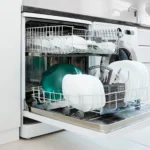Mini freezers are compact, convenient, and versatile appliances perfect for smaller living spaces or extra storage. But are they efficient and worth the investment? This guide answers common questions about mini freezers to help you make an informed choice.
Appliance Repair Servoices in Southern California:
Microwave Repair Service in Southern CaliforniaWasher Repair Service in Southern California
Freezer Repair Service in Southern California
Dishwasher Repair Service in Southern California
Refrigerator Repair Service in Southern California
How Efficient Are Small Freezers?
Small freezers, or mini freezers, are designed to consume less energy than standard full-sized freezers due to their compact size. However, the efficiency of a mini freezer depends on:
– Insulation quality: Better-insulated models retain cold air more effectively, improving energy efficiency.
– Temperature settings: Running a mini freezer at the optimal temperature helps balance performance and power use.
Are Small Freezers Expensive to Run?
Generally, small freezers are not very costly to run, but the exact cost depends on their size, energy rating, and usage frequency. Here are a few factors:
– Average power consumption: A typical mini freezer uses between 100 and 200 watts, costing about $2–$5 monthly if used regularly.– Placement and ambient temperature: Freezers in hotter areas (like garages) work harder to stay cool, leading to higher energy costs.– Efficiency settings: Keeping the freezer at the ideal temperature can reduce costs over time.
What is the Life Expectancy of a Small Freezer?
A well-maintained mini freezer can last anywhere from 8 to 12 years.
– Maintenance and care: Regular defrosting and proper cleaning can prolong the appliance’s life.
Do Freezers in Mini Fridges Work Well?
Many mini-fridges come with small freezer compartments, but they may not match the performance of standalone mini-freezers. Here’s why:
– Limited freezing capacity: These compartments are often small and may not reach temperatures low enough for long-term freezing.
– Best for short-term use: They are ideal for ice and small items but may not effectively freeze meats or larger quantities of food.
Where Should You NOT Put a Mini Fridge?
For optimal efficiency and safety, avoid placing a mini fridge:
– In hot areas: Avoid placing it near stoves, heaters, or direct sunlight.
– Outside or in non-climate-controlled spaces: Outdoor temperatures can cause the mini freezer to overwork, leading to higher energy use.
– In tight spaces without ventilation: Mini freezers need space around them for proper airflow; avoid cramped areas.
How to Choose a Mini Freezer
– Type: Upright models are easier to access, while chest models often have better energy efficiency.
– Special features: Look for adjustable thermostats, frost-free options, and removable shelves.
How Long Does it Take for a Mini Freezer to Get Cold?
A mini freezer typically takes 4–12 hours to reach optimal freezing temperatures, depending on the model. For best results:
– Avoid overloading initially: Place only a few items in the freezer at first to allow even cooling.
– Check the thermostat setting: Make sure the freezer is set to the recommended temperature before storing food.
Why is My Mini Freezer Not Freezing?
If your mini freezer isn’t freezing effectively, several issues could be at play:
- Overloading: Storing too many items restricts airflow, which can impact the freezer’s ability to cool evenly.
- Damaged Door Seals: When door seals are worn or damaged, warm air may seep in, disrupting the internal temperature.
- Thermostat or Compressor Malfunctions: A faulty thermostat or compressor can cause irregular cooling and make it difficult for the freezer to maintain the correct temperature.
Best Temperature Setting for a Mini Freezer
The recommended temperature for a mini freezer is 0°F (-18°C). This temperature ensures food safety and prevents freezer burn.
Preventing Freezer Burn in a Mini Freezer
To keep food from getting freezer burn:
– Use airtight containers: Properly sealed bags or containers keep air from drying out food.
– Avoid overcrowding: Allow space for air circulation to maintain an even temperature.
#### What Are the Disadvantages of Mini Freezers?
While mini freezers are handy, they have some limitations:
– Limited storage space: They may not be suitable for large households or bulk storage.
– Less consistent temperature: Cheaper mini freezers may not maintain as steady temperatures as full-sized units.
Additional FAQs About Mini Freezers
1. How cold can mini-fridges get?
Most mini fridges can reach temperatures as low as 32°F (0°C) in the refrigerator section, but only the freezer compartments, if available, can freeze items effectively.
2. How long will a mini freezer last without power?
In a power outage, a mini freezer can keep items frozen for up to 24 hours if they remain unopened and full.
3. Can a mini freezer be used as a fridge?
Yes, some mini freezers allow for temperature adjustments to be used as a fridge, though it’s best to consult the manufacturer’s guidelines.
4. What can a 3.5 cu ft freezer hold?
A 3.5 cubic foot freezer can typically hold around 100 pounds of food, which is ideal for small households or as supplementary storage.
5. How often should you defrost a mini freezer?
For optimal performance, defrost a mini freezer every 6 to 12 months or when frost accumulation reaches ¼ inch.
Final Thoughts
Mini freezers offer a practical solution for those needing compact, convenient cold storage. Selecting the right model and applying good maintenance practices can help you achieve long-lasting, energy-efficient operation while keeping your frozen foods safe and well-preserved.

Eric
Eric is the founder and lead repair expert at Appliance Repair Southern California. With 17+ years of experience, he has built a reputation for providing fast, reliable, and high-quality repair services across Southern California. His expertise covers a wide range of appliances, including refrigerators, ovens, dishwashers, and washing machines. Eric is committed to exceptional customer service and ensuring every repair is done right the first time. Under his leadership, Appliance Repair Southern California continues to be a trusted name in the industry.




